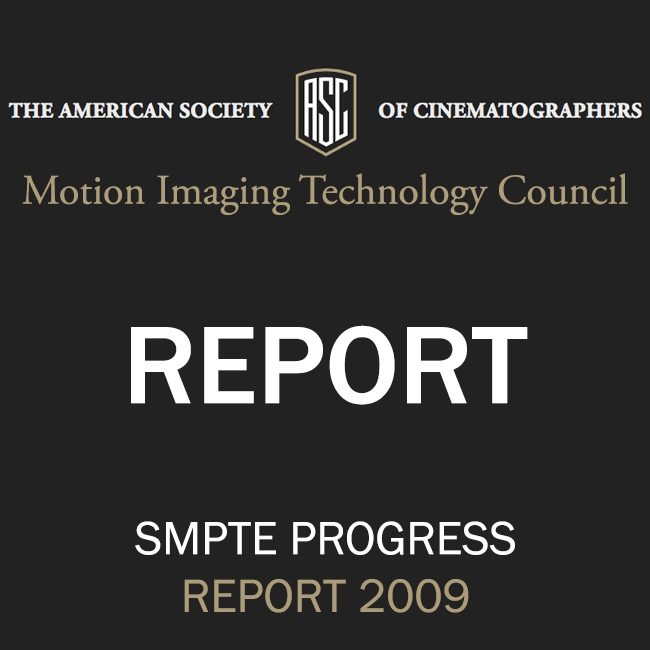Report Authors
Curtis Clark, ASC; Michael Goi, ASC; David Reisner; Dave Stump, ASC; Richard Edlund, ASC; Al Barton; Lori McCreary, PGA; Lou Levinson; Joshua Pines; Gary Demos; Jim Fancher; Jim Houston; Glenn Kennel; Grover Crisp; Garrett Smith; Stephanie Argy; Lenny Lipton; David Morin; Ron Frankel
ASC Technology Committee Officers
Chair: Curtis Clark, ASC
Vice-Chair: Richard Edlund, ASC
Vice-Chair: Steven Poster, ASC
Secretary: David Reisner, D-Cinema Consulting
For the past several months, the central project for our ASC Technology Committee has been the Camera Assessment Series (CAS) conducted jointly by the American Society of Cinematographers, the Producers Guild of America and Revelations Entertainment. The group selected seven digital motion picture cameras and compared each of them to a film reference—the benchmark standard for theatrical motion picture quality. CAS was designed to explore performance characteristics of the seven cameras within a commonly used hybrid film/digital 2K post workflow designed for theatrical motion picture releasing on print film and digital cinema (DCP) to determine how compatibly these digital motion picture cameras would fit in that workflow without having to go through proprietary post facility image transform machinations.
For the better part of this year, the enormous scope of this ambitious all-volunteer project has demanded continuous attention, starting with initial planning and preproduction through shooting and then through Digital Intermediate (DI) post finishing for seven digital motion picture cameras and one film camera.
Four scenes from the shoot have been selected for the final version of the presentation: a day exterior; a day interior; a dusk/night interior; and an extreme high tonal contrast interior using a bare light bulb as a single light source. All scenes were shot on standing sets used for the TV series “Desperate Housewives.”
While there are many ways that these cameras can be used and integrated into productions, the Camera Assessment Series was designed to test the cameras within a commonly used hybrid film/digital post workflow finish designed for theatrical motion picture release on print film and digital cinema (DCP). Needless to say, many people were eager to suggest alternate approaches based on their varied experiences with custom workflow post finishing procedures. Filmmakers develop highly personal and frequently conflicting perspectives on digital camera image quality that correspond with their varied results. To get a manageable handle on the digital cameras’ image performance we realized it was necessary to eliminate the “wild card” variability of multiple workflows by selecting a commonly deployed “neutral” DI workflow finish for all the cameras.
As far as we know, this is the first time that anyone has done a photographic performance assessment of the seven participating digital motion picture cameras using a commonly deployed DPX file-based film-centric digital intermediate workflow finish. Our target imaging reference was film because “film look” has been the defining photographic benchmark from the inception of cinema. Most of the digital motion picture cameras selected for CAS have implemented a log-encoding option for their image capture in their attempt to move beyond the confines of HD Rec.709 to more closely emulate the performance characteristics of a film negative within DI post finishing. Consequently, we wanted to assess how log-encoded images from these digital motion picture cameras fit in that hybrid film/digital post workflow, without necessarily having to go through proprietary “secret sauce” post facility contortions to make them fit into that workflow. The DI pipeline was 2K because we wanted this assessment to be representative of the majority of current DI post finishing. (NB: the 35mm film references were scanned at 4K on a Spirit Data Cine and converted to 2K.)
A primary discovery made at the start of the DI post process was that all the log-encoded digital camera images required an Input Device Transform (IDT) to adjust the gamma slopes of their respective log curves to be more compatible with Cineon print density, thereby enabling the non-destructive use of a film print emulation LUT for color grading intended for film out. The ASC Color Decision List (CDL) Power function proved to be an effective IDT. As a result of this experience, some digital camera manufactures have started to create IDT LUTs to provide this essential function for their respective cameras.
Having gained invaluable knowledge and experience via CAS about the performance of the current crop of “mainstream” digital motion picture cameras, we now have a better understanding of the challenges that filmmakers face in maximizing the imaging potential of these cameras within various post workflow options. In addition to the ASC Technology Committee Subcommittee reports included in this SMPTE progress report, our ASC Technology Steering Committee has recently reviewed and agreed on our agenda for the coming year. The pressing issues concerning workflow color management and the need for unambiguous transforms between log, video “linear”(gamma), and scene referenced linear encoded images have been intensified by the rapid adoption rate of digital motion picture cameras for both feature and TV production. As a consequence, the ASC Technology Committee will be focusing attention on the Academy of Motion Picture Arts and Sciences (AMPAS) Science and Technology Council’s Academy Color Encoding Specification (ACES) within its Image Interchange Framework (IIF) as defined by their proposal.
Curtis Clark, ASC
ASC Technology Committee Chair
